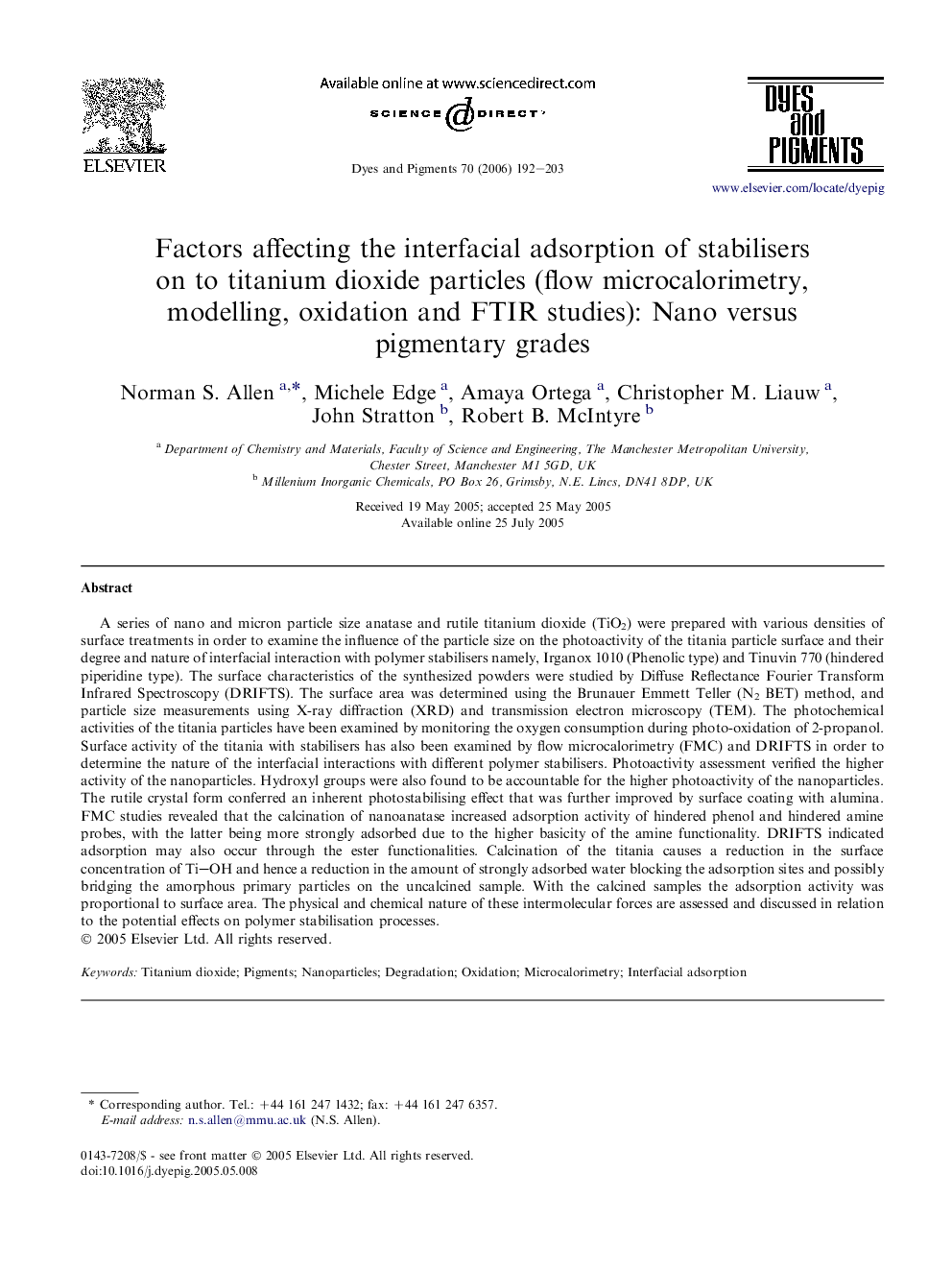| کد مقاله | کد نشریه | سال انتشار | مقاله انگلیسی | نسخه تمام متن |
|---|---|---|---|---|
| 178270 | 459030 | 2006 | 12 صفحه PDF | دانلود رایگان |

A series of nano and micron particle size anatase and rutile titanium dioxide (TiO2) were prepared with various densities of surface treatments in order to examine the influence of the particle size on the photoactivity of the titania particle surface and their degree and nature of interfacial interaction with polymer stabilisers namely, Irganox 1010 (Phenolic type) and Tinuvin 770 (hindered piperidine type). The surface characteristics of the synthesized powders were studied by Diffuse Reflectance Fourier Transform Infrared Spectroscopy (DRIFTS). The surface area was determined using the Brunauer Emmett Teller (N2 BET) method, and particle size measurements using X-ray diffraction (XRD) and transmission electron microscopy (TEM). The photochemical activities of the titania particles have been examined by monitoring the oxygen consumption during photo-oxidation of 2-propanol. Surface activity of the titania with stabilisers has also been examined by flow microcalorimetry (FMC) and DRIFTS in order to determine the nature of the interfacial interactions with different polymer stabilisers. Photoactivity assessment verified the higher activity of the nanoparticles. Hydroxyl groups were also found to be accountable for the higher photoactivity of the nanoparticles. The rutile crystal form conferred an inherent photostabilising effect that was further improved by surface coating with alumina. FMC studies revealed that the calcination of nanoanatase increased adsorption activity of hindered phenol and hindered amine probes, with the latter being more strongly adsorbed due to the higher basicity of the amine functionality. DRIFTS indicated adsorption may also occur through the ester functionalities. Calcination of the titania causes a reduction in the surface concentration of Ti–OH and hence a reduction in the amount of strongly adsorbed water blocking the adsorption sites and possibly bridging the amorphous primary particles on the uncalcined sample. With the calcined samples the adsorption activity was proportional to surface area. The physical and chemical nature of these intermolecular forces are assessed and discussed in relation to the potential effects on polymer stabilisation processes.
Journal: Dyes and Pigments - Volume 70, Issue 3, 2006, Pages 192–203